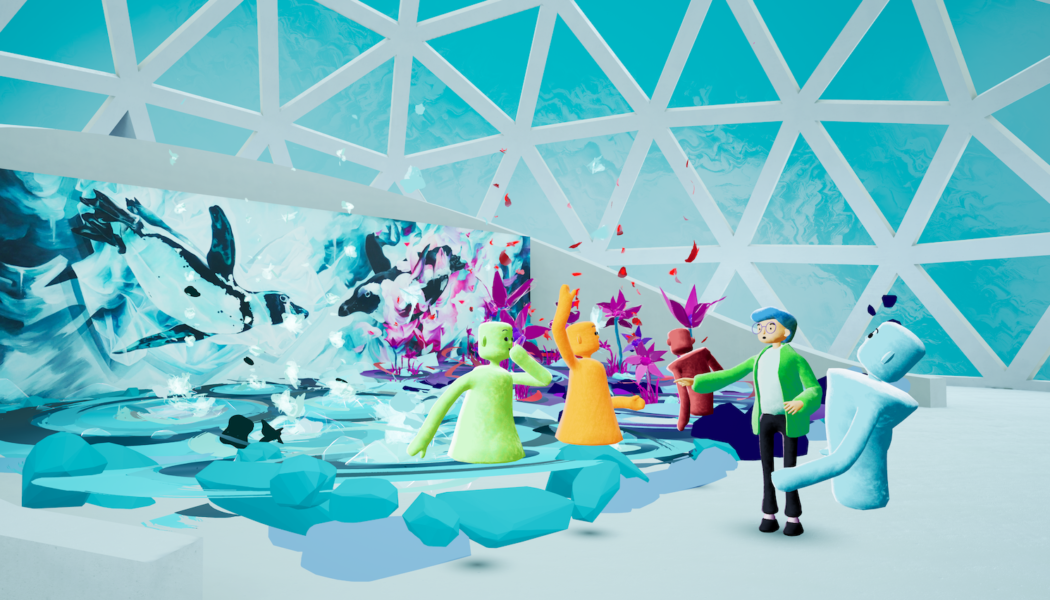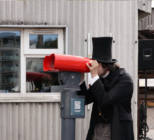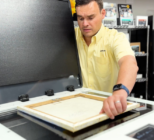For better or worse, the museum and heritage sectors are in somewhat of a technological arms race, all the way from the front desk to the headline exhibition.
With the introduction of new innovations comes a debate over how best to move the technology from novelty to a valuable story-telling device. Here, Advisor sets out some of those technologies, as they move from proof of concept to working examples.
Projection mapping is transforming spaces large and small
When projected on walls, ceilings, floors and objects, projection mapping allows existing surfaces to come alive with virtual content that can be viewed by users either standing close or – at the scale of building walls – viewed from afar.
The technique can be used to highlight existing features within historical buildings, bring to life specific shapes and structures, and illuminate structures custom-built for an installation.
As an alternative to screens in a multimedia exhibit, or as a system for highlighting existing facades, the creation and installation of projection mapping will require a bespoke build and installation.
Recent use cases include the Van Gogh Exhibit in Manchester’s MediaCity, which relies extensively on projection mapping to fill otherwise empty walls with video.
In another example is Harewood House and its ‘Luminescence’ projection mapping installation from multimedia artists Dave & Kristin McGuire. Part of the ‘A Night At The Mansion’ exhibition, it would go on to win Innovation of the Year at the Museums + Heritage Awards in 2020.
Luminescence. A projection mapping installation we created as part of A Night At The Mansion. Our award-winning visitor attraction that took place throughout the rooms of Harewood House. @harewoodhouse @studiomcguire #videomapping #projectionmapping #statelyhome #projection pic.twitter.com/s1NCIpygen
— Davy and Kristin McGuire (@studiomcguire) May 3, 2021
Binaural technology adds an immersive layer to audio
Binaural audio is a type of audio specifically recorded in two channels to mirror two human ears, to mimic the effect of immersive sound when played back.
The technique replicates how humans naturally hear sounds by creating the effect of actually hearing sound within a space. This creates an immersive experience that allows museum visitors to feel like they’re part of the exhibit. In other words, binaural audio allows visitors to ‘hear’ in 3D.
Among the museums to put the technology to use is The Met. Its Visitors to Versailles exhibition included headsets that visitors could wear.
Instead of traditional commentary by experts about specific objects, this binaural audio experience is “hosted” by actors portraying royalty, ambassadors, architects, travel writers, and tourists as they travel in an open carriage from Paris to Versailles.
‘Digital twins’ preserve and replicate delicate objects
The concept of a ‘digital twin’ expands on object photography in 3D. Photogrammetry – the process of taking photos and volumetric data at once – allows for the creation of a virtual model which can be scanned and then exists in 3D space.
It’s a process benefitting the preservation of physical objects by freezing them in a moment in time a part of a digital archive. But it also allows for visitors to satisfy the urge to pick up and manipulate objects.
Firms such as London’s Form Capture offer onsite scanning of objects, and has worked with the likes of The British Museum – alongside Nike and Google – in creating 3D captures.
Also making use of this technique is the Anglo Sikh Museum’s collection of virtual objects, which can not only be rotated and moved in 3D within a browser but have ‘hotspots’ providing further information.
Contactless donations in a cashless society
Coronavirus has all but finished off physical cash, and that’s a problem for museums and heritage attractions hoping to make the most of visitors’ spare change as they enter or exit.
But just as contactless payments are expected in retail, so too are contactless donations now the most convenient way to give. Manchester’s People’s History Museum (PHM) is among the museums adopting the ‘tap-to-give’ technology. Via GoodBox, a technology company specialising in ‘tap-to-give’ contactless donation stations, the museum is able to increase donations and continue engaging with visitors while keeping entry free in a cashless society.
What’s more, PHM reports that the new statistics about digital donations allows it to think more strategically about how visitors give. Since installing the technology, it has discovered that visitors donate most during the weekend, particularly between 1pm and 2pm.
Holographic displays add an extra dimension to visuals
Among museums using the technology to its fullest effect is The Holocaust Museum in Los Angeles, which debuted a life-size hologram of Holocaust survivor and fashion designer Renee Firestone. Firestone was filmed with an array of cameras answering questions, and the resulting videos were converted into a hologram which makes up a permanent installation called “Dimensions in Testimony”, created by the USC Shoah Foundation, an LA-based nonprofit founded by Steven Spielberg.
A more affordable option is holographic fan display technology, which uses a rotating LED bar to give the illusion of a floating object. The technology has been used by display company Virtual On to create Dr WHO themed holograms at an event at The British Film Institute (BFI).
Apps as an all-knowing tour guide
A digital layer on top of existing displays without the need for multimedia investment, a channel through which to stay in touch with visitors, and more prescient in recent years as a digital alternative to those who can’t visit in person.
Among the locations to adopt app guides, and following in the footsteps of Central Park Conservancy, Black Cultural Archives, is Yorkshire Sculpture Park (YSP) which collaborated with Bloomberg Philanthropies to produce a digital guide accessible via the Bloomberg Connects app.
The app enables visitors to discover content and access information about artworks displayed by YSP, answer the questions a typical paper guide might, and deliver film and audio content.
At YSP, an audiovisual guide for Joana Vasconcelos’s headline exhibition Beyond and standalone works by the likes of Alfredo Jaar, Kalliopi Lemos, Jaume Plensa, RAQS Media Collective, Ursula von Rydingsvard, and William Tucker are available.
The existing technology developed by the Bloomberg Connects app leaps the often costly hurdle of building an app from scratch. But, larger museums have moved to create their own distinct offering.
Among them is The History of Science’s Pocket Curator app, which offers more interactive ways to explore the Museum, with animations, audio commentary and interactive demonstrations of museum objects.
VR as a gateway to virtual museums
Virtual museums platform Curatours opens debut ‘Museum of Plastic’
While AR/VR is established technology reshaping the way museums and exhibits are displayed, it is now being harnessed to create entire virtual museums with multiple exhibitions.
Last year the first ‘virtual museum’ of its kind was launched on virtual reality platform Curatours, which has been designed specifically for museum and gallery experiences.
Part of British Council’s Creative Commissions programme, which explores climate change as part of The Climate Connection Global global initiative, the virtual ‘Museum of Plastic 2121’ is based on an imagined future 100 years from now, in which current efforts to curb plastic use have been effective.
It is one of what is expected to be a long list of virtual museums on the platform, opening the doors to a new breed of museum curator, new opportunities to create experiences in a world without budget, and social interaction with other virtual users who might be on the other side of the globe.
Visitor flow tech makes tracking people smarter
Museums are using visitor flow technology to understand how people experience their exhibits. The data is used to improve the visitor experience by providing content that aligns with visitors’ interests and helping museums organize their collections in a way that better connects with visitors’ needs. This new approach has changed the museum landscape forever.
The Museo dell’Opera del Duomo in Siena is among those which have adopted new technology to aid in this process, which can be carried out through tracking wi-fi connections, online ticketing, and in the case of the Italian art museum, through the installation of 3D sensors.
Using people counting sensor technology from Xovis, which provides the same service to the retail and transport sectors, the sensors and technology can automate people flow, allowing for better route making and reporting.










